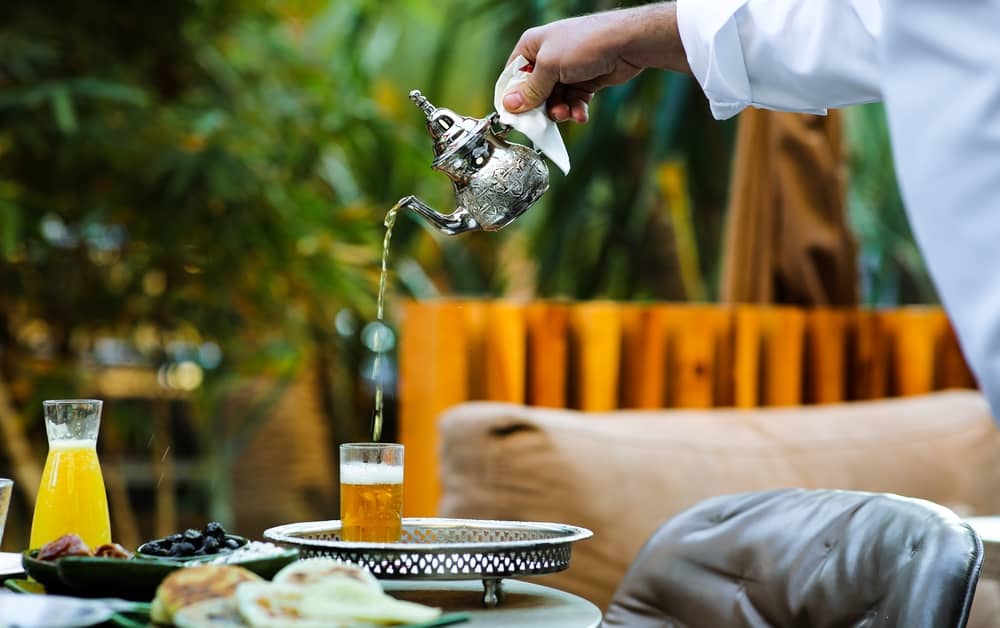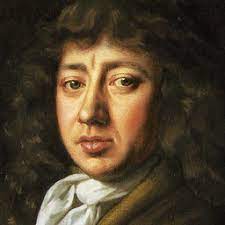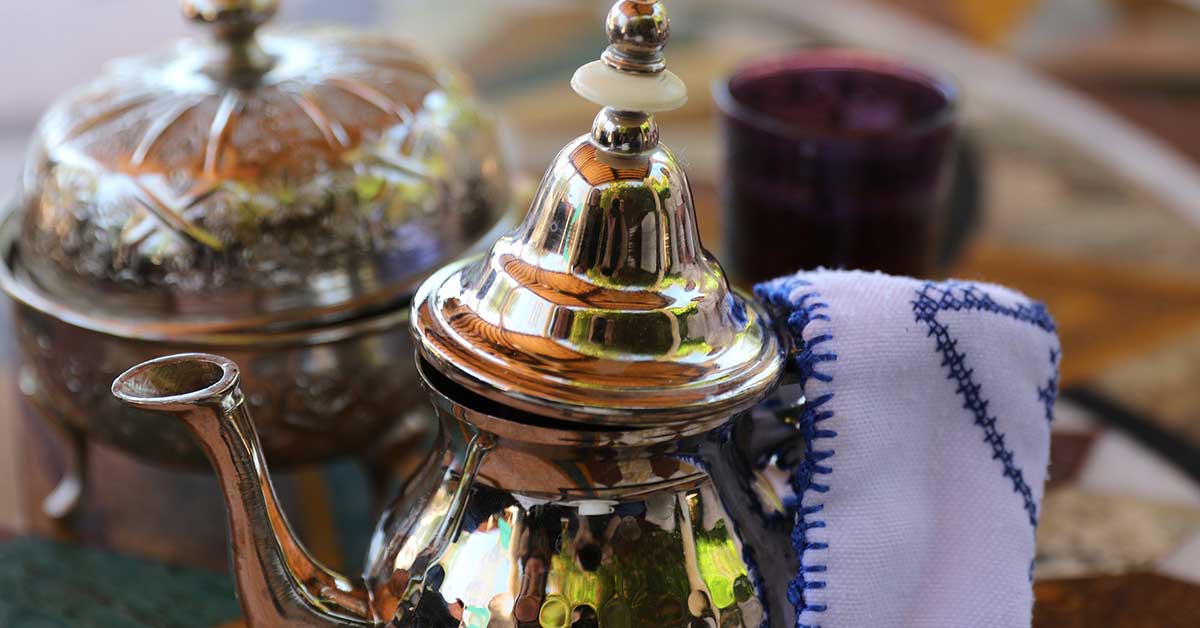It is quite usual for tourists to be offered a glass of tea when visiting Morocco. This may be from a casual acquaintance, a complete stranger you meet on your adventures, or a shopkeeper when haggling over prices.
Although one should always be cautious, it has been known for tourists to be given spiked drinks and awaken to find their money and valuables have been stolen, the offer of tea is considered a cultural act of hospitality in Morocco and to reject an offer of Moroccan tea can be taken as an offence. As for the reason for considering refusing an invitation to share Moroccan tea as rude, it is because of the fact that Moroccans think of this offer as a way to make relationships and connect with other people. The mutual idea that they agree on is that the rite of Moroccan tea is an art form.
In this article we shall address: The History of Moroccan mint tea; the ingredients of Moroccan mint tea including Gunpowder tea, beetroot or cane sugar, spearmint and additional components; how to prepare Moroccan mint tea and serving Moroccan mint tea.
Moroccan mint tea, also known as “Berber Whisky ”, “Whisky Marocain, or Maghrebi Mint Tea is one of the pillars of Moroccan tradition and Moroccan cuisine.
In Morocco, tea is drunk at all times of the day whether families are alone or with guests. They also drink tea on all occasions whether they are happy events such as celebrating a birth and a wedding ceremony or sad ones such as death. When they eat meals with each other, they also drink tea. Don’t be surprised if you hear that Moroccans drink tea 20 or even 30 times every day, though this is usually at least a slight exaggeration. It is worth mentioning that they drink tea slowly and without any hurry.
Souad, a teacher, and a master of La Maison Arabe‘s tea events, points at the Moroccans’ view of drinking tea, stressing the fact that making tea isn’t only about heating the water and putting in mint. It is much more than that. It is a ritualistic art, a rite for them, just like it is for the Chinese or Japanese. Souad is the demonstrator at a tea event that is a part of the cooking tutorial lessons that are provided by La Maison Arabe every day.
Moroccan tea has both therapeutic and cosmetic advantages. There are also many herbal teas based on plants that are grown in Morocco. In this kingdom, you can find over 4,200 kinds of plants that are described as indigenous and 400 that are categorized as species known for their therapeutic or scented and perfumed usage.

History of Moroccan mint tea
Morocco’s convention of tea is rumoured by some to go back to the 12th century BC. There are different stories regarding the arrival of tea in the Maghreb. A few claim that the ancient Berber or “Amazigh” people brought tea from Asia. There is no evidence to support this claim. On the other hand, some people suggest that Queen Anne Stuart of Great Britain offered tea to the Moroccan Sultan as a tactic or strategy to liberate British captives. Again this seems to be a myth, though the offer may have been made but not accepted.
It was in the 17th century, during the reign of Sultan Moulay Ismaïl, that tea made its debut in Morocco. The English ambassadors to the country offered tea as a gift to the Moroccan Royal Court. It was then a rare and expensive drink, reserved for the Sultan and nobles, even the Britsh kept it locked in secure vaults, safes and bejewelled lockable boxes.

In 1683, the famous English politician and diarist Samuel Pepys arrived in the short-lived British colony of Tangier as secretary to its Governor, Lord Dartmouth. Pepys became the treasurer of the city in 1685 and pushed the sale and usage of tea in Morocco. But it was still the province of the wealthy. It is said that Pepys also introduced the English-style teapot to the country.
The British use ceramic teapots as they believe the flavour of tea is better in china vessels, both teapots and teacups. Coffee is served from metal coffeepots. The tale has it that Moroccan children, not as well-behaved as the British kids of the time, broke all the teapots and crockery. Hence the metal coffeepots, virtually unbreakable, had to be used instead, and cheap, easily replaceable glasses from which to drink. This is said to be why Moroccans to this day serve tea from metal pots and drink from simple glasses.
In 1854, the British saw their tea exports to Slavic countries interrupted by the Crimean War. In search of new outlets for exports from their tea plantations in India, they turned to Morocco, very accessible from British Gibraltar. From then on, tea became part of the daily life of all sections of the Moroccan population, especially since the locals were already consuming infusions of aromatic herbs.
The traditions of Moroccan Mint tea are passed on from one generation to another. You can see the rite of Moroccan tea in houses, Kasbahs and tutorial cooking lessons all over the nation. If you question any Moroccan about recollections of their childhood, they will immediately recall the picture of their mother in the kitchen preparing mint tea from herbs to prevent or fight off colds or to enhance the digestion of her family members.
Ingredients of Moroccan mint tea.
In every glass of Moroccan Mint Tea, you will have three main components: Gunpowder Tea; Beetroot Sugar and Spearmint.
Gunpowder Tea.
If we consider the frequent times that Moroccans drink tea, we will be astonished at the amazing fact that the tea consumed in the country isn’t sown and planted in Morocco. It is imported from China.
The basic element of Moroccan mint tea is gunpowder tea. It looks similar to real gunpowder and appears like little coiled black balls. Compared to green tea, which the majority of people are acquainted with, including the British and Indians, gunpowder tea has a substantially stronger flavour. Especially when it is mixed with herbs or mint, gunpowder’s strong, smoked flavour adds a special and distinct taste to the tea.
Beetroot or cane sugar.
The second ingredient is sugar. Traditionally, Moroccans add a large amount of healthy beetroot sugar to the pot. Lumps or spoonfuls are often added to the glass of the individual depending on their taste.
Beetroot sugar is derived from the Moroccan-grown beetroot crop which is full of minerals and vitamins. You will find almost no one in Morocco who drinks tea with no beetroot or, in modern times, cane sugar. It was considered rather unusual for a Moroccan to drink unsweetened tea, however, these days a larger number of Moroccans are consuming tea with little or no sugar because of the foreign influence and the understanding that Moroccans consume far more sugar than is good for them.
Sugar-related and genetic diabetes are a huge problem here. As for the taste, you will find Moroccan tea without sugar more bitter and with a stronger taste. The mixture of gunpowder tea and mint without sugar gives the tea a pungent taste.
Spearmint.
Even though there are many types of mint planted in Morocco, pretty much the only variety used is spearmint, because of its unique, bitter yet mild scent.
Additional ingredients.
You can find several kinds of tea that are drunk in Morocco besides the conventional Moroccan Mint Tea. Traditional Moroccan tea is normally drunk without any additional components. But some people who choose to consume tea for the sake of their health, or because they don’t like the taste of traditional tea will add many fragrant herbs to their drink. A few of these plants include dehydrated rose petals, and other flower petals, in addition to lemon and orange rinds and orange flower water.
Moroccan Mint Tea, More unusual ingredients, herbs and additional flavours that are used in Moroccan Tea:
- Peppermint: similar to spearmint but with a slightly peppery flavour.
- Bergamot: famous for its calming properties and its sweet scent.
- Lemon balm: fights restlessness and helps in sleeping.
- Absinth: Considered excellent, especially in winter for its warming qualities. It is also said to be beneficial for the gallbladder and pancreas.
- Sage: helps you to digest food and enhances your ability to remember and store information.
- Saffron: warms up the body and controls hormones.
- Orange Flower Water: has a sweet fragrance and is often added on special occasions.
- Lemon Verbena: if you want a calming and different taste, then we recommend adding this ingredient.
- Thyme: discourages harmful bacteria, fixes the gut lining and reduces the feeling of burning discomfort or inflammation.
- Geranium: adds a floral taste to the mint tea and helps in calming.
The admixture of Moroccan tea also has several useful components like vitamins and antioxidants that are anti-inflammatory, and it has many characteristics to enhance strength and patience. It also helps you to digest food and enhances your intellectual efficiency. In addition to its efficiency in prohibiting the increase of bacteria and even cleaning up skin diseases. Antioxidants in tea enhance patience, helping protect you from any cardiovascular illness or cancer.
Read also: Top 12 Tips To Avoid Getting Sick in Morocco
How to prepare Moroccan mint tea.
- Put two teaspoons of gunpowder green tea in a traditional Moroccan teapot.
- Then, add a little fresh mint.
- Next, choose any herbs that you like and add them.
- Add beetroot sugar (about 4 pieces)
- Add boiled water and leave it to stew for a few minutes
- After that, add a little more water and pour the drink into a glass.
- Then, pour a little boiled water into the teapot once again. Tip the glass of tea back into the pot. This second rinsing will wash away the bitter taste and the tea will get blacker than before.
- Put aside the second glass. You will use only the first extract of tea.
- If you want to blend all the components, just pour the tea into a glass and pour it back into the teapot. Don’t stir the mixture with a spoon or the herbs will bruise.
Repeat this process two or three times for an excellent outcome.
Serving Moroccan Mint Tea.
When you serve the tea, it is essential to put it in a Moroccan teapot and pour it from a high position, because this process will add oxygen to the tea keeping it foaming at the top of the glass. The altitude at which the tea is poured should be at least twelve inches, great fun can be had performing this action and it can look very impressive, There are even competitions in Morocco where contestants stand on platforms and ladders to see who can pour tea into a glass from the greatest height.
If you are interested in keeping healthy, then you should consider drinking Moroccan mint tea. The Berbers and Desert Nomads who inhabit the Sahara, the oases and other hotter regions of Morocco, drink hot tea all year round, even in the heat of summer. Drinking hot liquids helps equalise the body temperature and has a relaxing effect which also helps keep you cool.
Read also: Moroccan Couscous Recipe






